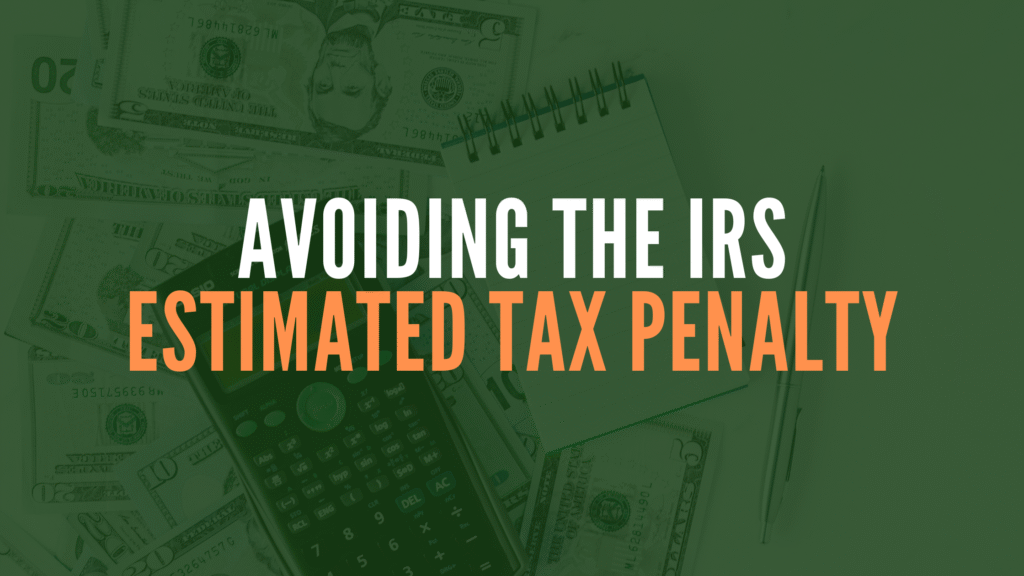In the U.S., we have a “pay-as-you-go” tax system, which means you must pay your taxes throughout the year as you earn income whether through withholding, estimated tax payments, or a combination of both.
If you don’t pay enough tax during the year, the IRS can charge you a penalty. This penalty is not deductible, and it can add up quickly. Here’s how to avoid it and keep more money in your pocket.
What Is the Estimated Tax Penalty?
If you fail to pay enough taxes throughout the year, the IRS can impose a non-deductible interest penalty on the amount you underpaid.
- The penalty rate is determined by the short-term interest rate plus 3 percentage points.
- Right now, the penalty rate is 8% the highest in 17 years due to rising interest rates.
The penalty applies each quarter that you underpay. If you’re self-employed or have income from sources without withholding (like retirement distributions, dividends, interest, capital gains, rent, or royalties), you’re at risk of incurring this penalty.
Who Needs to Worry About This Penalty?
If you’re self-employed or have other sources of income without tax withholding, you’re responsible for paying your taxes directly through estimated quarterly tax payments.
- If you’re an employee with all your taxes withheld by your employer, you don’t need to worry about the penalty.
- C corporations are also subject to this penalty if they underpay their estimated taxes.
How to Avoid the Estimated Tax Penalty
The good news is, it’s easy to avoid the penalty! Here’s how:
- For individuals: You need to pay one of the following to avoid a penalty:
- 90% of the total tax due for the current year.
- 100% of the tax you paid in the previous year (or 110% if your adjusted gross income is over $150,000 ($75,000 for married individuals filing separately)).
- 90% of the total tax due for the current year.
- For corporations: They need to pay 100% of the tax due for the current or previous year. However, large corporations can’t use the prior year’s tax to calculate their estimated payments.
What if You Miss a Payment?
Most individuals and corporations make equal quarterly payments to the IRS. The penalty is calculated separately for each quarter, meaning that if you miss one payment, you can’t make up for it with a larger payment in the following quarter.
Even if you’re due a refund when you file your tax return, you can’t reduce the penalty for one period by increasing payments later on.
Can I Use a Different Method to Calculate Estimated Taxes?
Yes, but it can get a bit tricky.
Some individuals and corporations can use alternative methods, like the annualized income method, to calculate estimated taxes. However, these methods can be more complicated and may not always be the best option.
- The 8% penalty rate is high right now, so it’s important to stay on top of your estimated tax payments.
- Self-employed individuals and those with income from sources that don’t have tax withholding are at risk of this penalty.
- To avoid the penalty, pay 90% of the current year’s taxes or 100% of the previous year’s taxes (or 110% for high earners).
By staying on top of your estimated taxes, you can avoid costly penalties and keep your financial planning on track.
If you need help calculating your estimated tax payments or have any questions about how the penalty works, please don’t hesitate to give us a call. We’re here to help you navigate the complexities of tax season!

